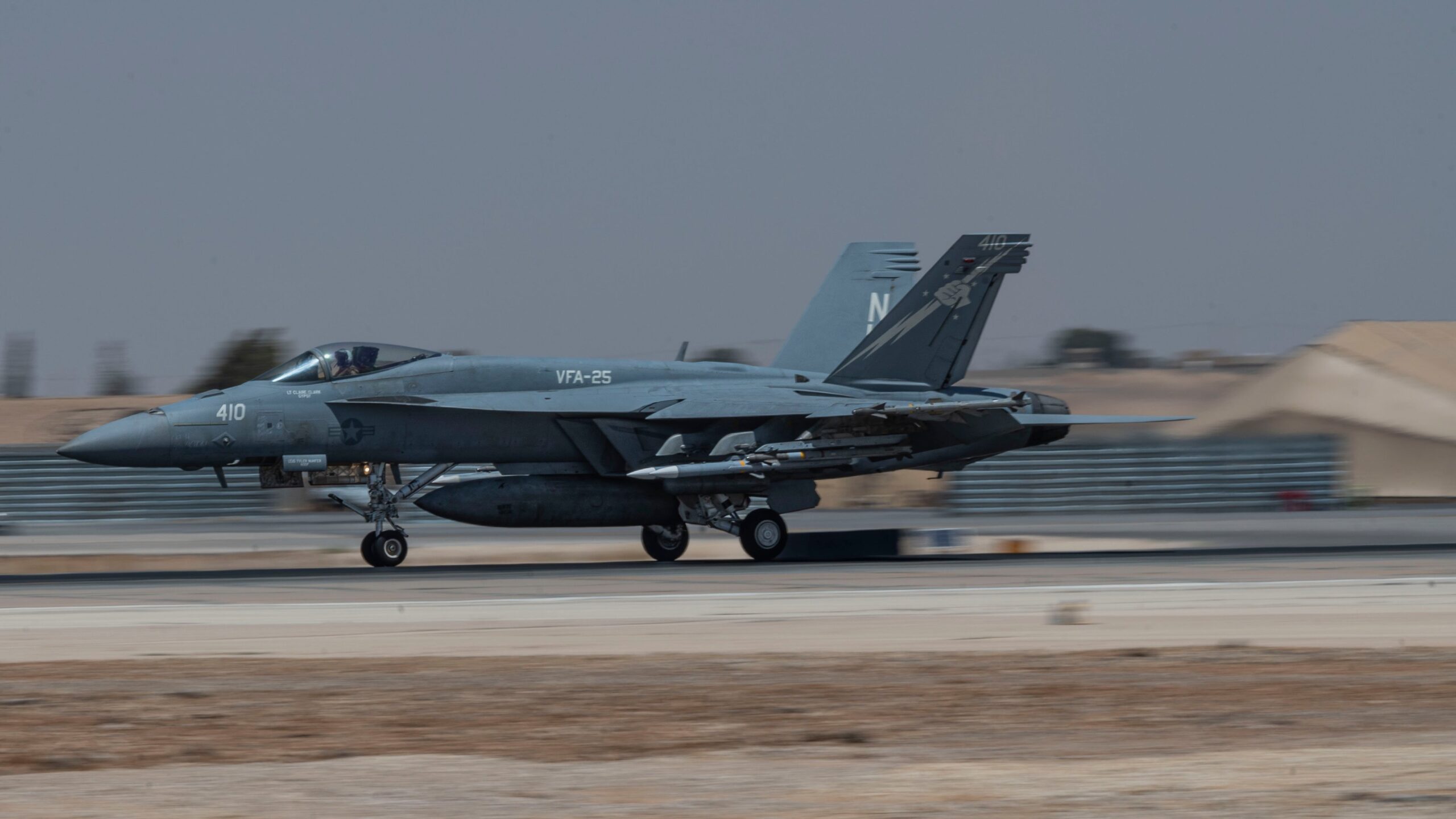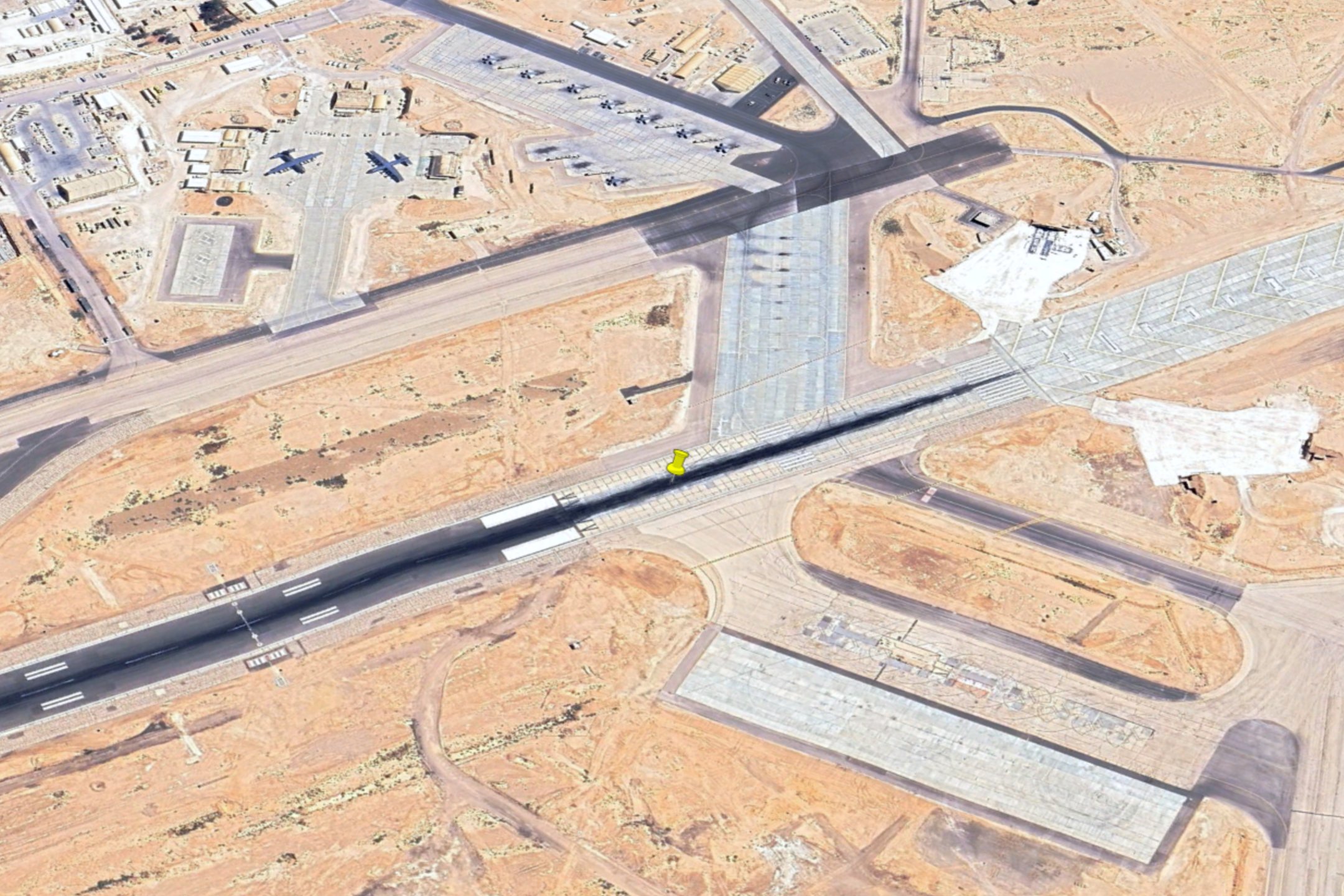U.S. F/A-18E Super Hornet Fighter Jets Arrive at Jordanian Air Base
The presence of these heavily-armed U.S. F/A-18E Super Hornet fighter jets in Jordan is believed to be part of a move by the U.S. to "protect" its ally, Israel, from potential ballistic missile attacks by Iran.
(DEFENCE SECURITY ASIA) — Heavily-armed F/A-18E Super Hornet fighter jets from the U.S. aircraft carrier USS Theodore Roosevelt have been spotted arriving and beginning operations at Muwaffaq Salti Air Base in Jordan.
These fighter jets were seen operating at the Jordanian airbase fully armed, carrying at least four AIM-120 AMRAAM and AIM-9X Sidewinder missiles.
The presence of these U.S. Super Hornet fighter jets in Jordan is believed to be part of a move by the U.S. to “protect” its ally, Israel, from potential ballistic missile attacks by Iran.
Iran has threatened a large-scale attack on Israel following the recent assassination of Hamas Political Bureau Chief Ismail Haniyeh in Tehran, which is believed to have been carried out by Israel’s Mossad intelligence agency.
It is anticipated that Iran could employ ballistic missiles, suicide drones, and cruise missiles if it decides to launch a major attack on Israel as retaliation for the killing of Haniyeh in Tehran.

As was the case in April, the U.S. has deployed its fighter jets to intercept and shoot down Iranian ballistic missiles, suicide drones, and cruise missiles aimed at Israel.
Most of the ballistic missiles, drones, and cruise missiles launched by Iran in April were shot down by American fighter jets while they were still in Jordanian airspace, before entering Israeli airspace.
Muwaffaq Salti Air Base in Jordan is strategically located to house U.S. fighter jets that can intercept Iranian missiles heading towards Israel, given its central location within Jordan.
With U.S. fighter jets already stationed at a Jordanian airbase, it suggests that Washington is prepared to “protect” Israel from any potential Iranian attacks.
For Jordan, the presence of U.S. fighter jets at its airbase indicates a strong likelihood that it will allow its airspace to be used by Washington to defend Israel against Iranian missile attacks.
It also suggests that Jordan may permit Israeli fighter jets to use its airspace to shoot down missiles launched by Iran against the Jewish state.

If this scenario unfolds, it would indicate that Jordan’s recent public statement, declaring that it would not allow its airspace to be used by any party, was merely an attempt to placate public anger in Jordan and across the Arab world over the killing of Haniyeh, allegedly by Israel.
Jordan’s decision in April to allow its fighter jets, as well as U.S. and Israeli jets, to use its airspace to intercept Iranian missiles and drones aimed at Israel sparked harsh criticism and condemnation from the wider Arab and Muslim world.
Jordan’s “generosity” in opening its airspace to Israeli and U.S. aircraft was intended to ensure that Iranian missiles and drones were destroyed within Jordanian airspace before they could enter Israeli airspace.
Many Arabs and Muslims worldwide were shocked by Jordan’s actions, viewing it as “defending” Israel at a time when the Jewish state, under Prime Minister Benjamin Netanyahu, is responsible for the deaths of over 39,000 Palestinians through its military actions in Gaza.

Facing intense backlash from the Arab and Muslim world over its perceived “defense and protection” of Israel, seen as a “betrayal” of the Palestinian people, the Jordanian government was compelled to issue a statement to clarify its position.
The Jordanian government claimed that its actions in directing its fighter jets to intercept Iranian missiles and drones, as well as allowing U.S. and Israeli jets to use its airspace, were purely for self-defense and not intended to aid Israel.
The government argued that Iranian missiles and drones entering its airspace en route to Israel had to be addressed to ensure they did not endanger its own citizens and the densely populated areas in Jordan. — DSA



Comments are closed.